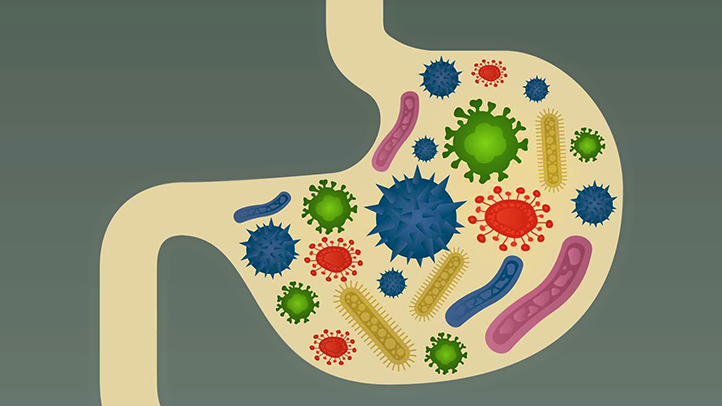4 Common Conditions Your Gut Bacteria May Help With
By Meg Pulkrabek MS, RD, LRD
Think of your intestinal environment like it’s a large city with millions of different people working together to maintain it. Our gut bacteria are very similar to a diverse community like this. The bacteria in our gut have a variety of separate roles and functions. In fact, the trillions of individual bacteria in your gut can total as much as 3 pounds! Our gut flora likely never looks the same as someone else’s. In fact, our own unique mix of gut bacteria is always changing, because just like in a large city, there are people that may move in and out. That leaves a lot of opportunities for science to learn more about our friendly tenants.
1) Type 2 Diabetes and Insulin Resistance
Bacteria may assist or interfere with our blood sugar regulation. If proportions of species of bacteria are unbalanced, insulin signaling pathways can be altered. This is like if our city we imagined earlier were mostly storing energy at the electrical plant instead of making sure the water in the river wasn’t flooding and mixing with the sewage. These types of unwanted interactions may activate inflammation and fat tissue storage, which interferes with blood sugar regulation. Depending on the signals being released due to bacteria present, it may affect how we are processing our carbohydrates.

2) Blood Pressure
Healthy bacteria in our gut produce natural chemicals that are absorbed into our blood stream. When these chemicals reach our blood vessels, they can send off a signal to lower the pressure as needed.
3) Mood
Irritations in our enteric nervous system in our digestive tract may effect conditions like anxiety and depression. This is called the “Brain-Gut Connection.” Some strains of bacteria send neurotransmitter messages to the brain. Depending on what it is our gut is communicating to our brain, it can cause feelings of depression or anxiety.
4) Immunity
Bacteria in our gut protect us from diarrhea and malabsorption. The bacteria in our gut may communicate with each other and our immune system to prevent disease. Our intestines are lined with “gut-associated-lymphoid tissue” to protect the body from invasion from viruses.
How do we maintain healthier gut bacteria?
Probiotics, like Kefir yogurt or kombucha, seem to be a popular answer. Probiotics are friendly live bacteria cultures that we can ingest and make up our bacterial flora in our GI tract. But another side of bacteria we often forget about is that the healthy bacteria in our gut are alive and need to eat! If your gut bacteria are sick, so are you. That’s where prebiotics come in. Prebiotics are non-digestible carbohydrate sources that act like food for bacteria. Popular options are raw garlic, raw onion, bananas and asparagus. Foods high in fiber may also help maintain a healthy gut flora as well, including brown rice, oatmeal, quinoa, chia seeds and flaxseed.






